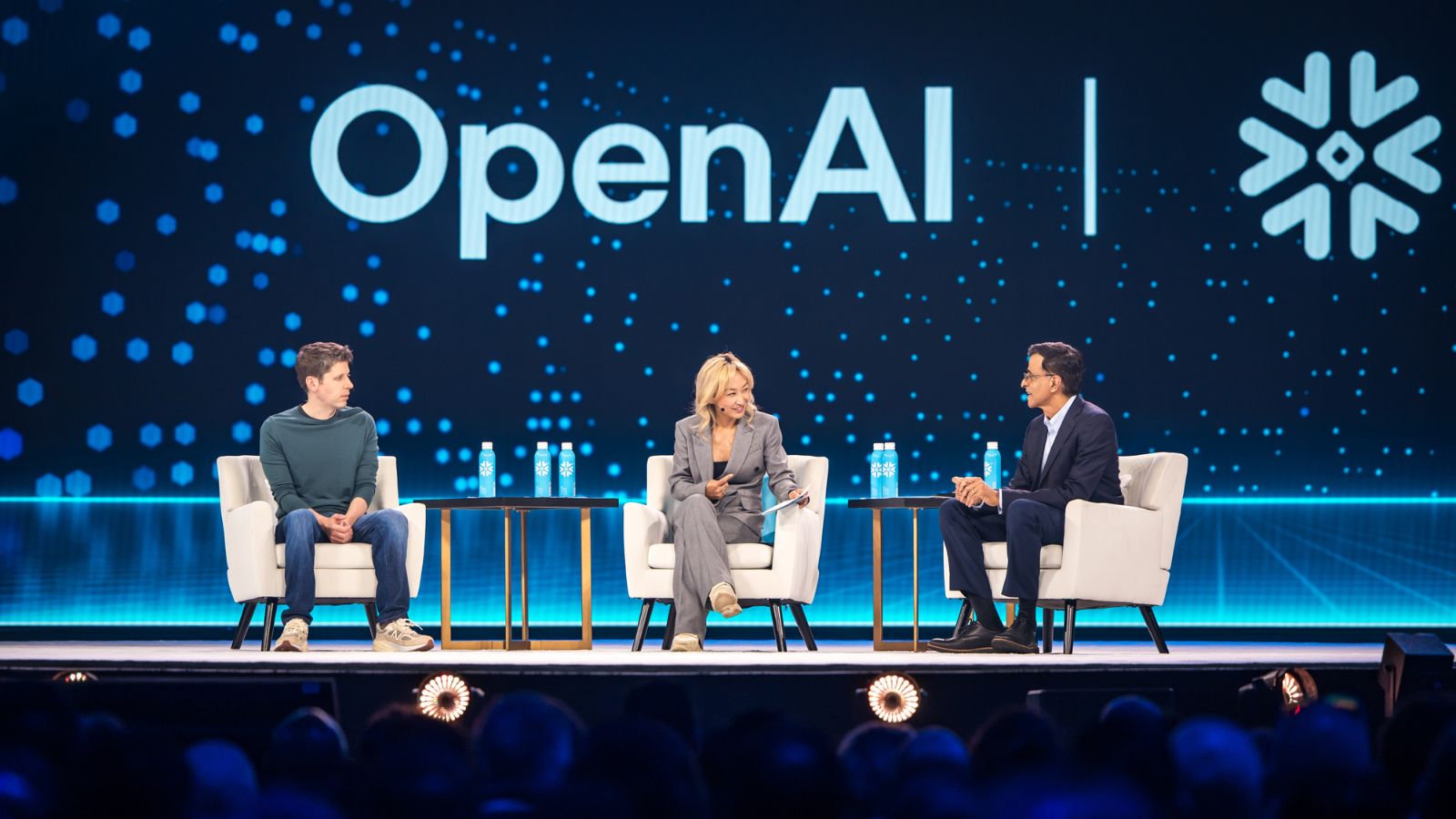“The true magic of great technology is taking something very complicated and making it feel easy,” said Sridhar Ramaswamy in his keynote address at the Snowflake Summit 2025, setting the vision for the company. The first day of the four-day summit taking place in San Francisco was nothing short of eclectic as thousands of data professionals, tech innovators, and enterprise leaders thronged to attend what Ramaswamy called “our biggest summit yet”. One of the major highlights of the keynote was OpenAI’s Sam Altman joining Ramaswamy for a fireside chat.
“The world’s hardest and most ambitious ideas, from personalised medicine based on your genetic data to autonomous factory floors to even virtual shopping experiences, these things aren’t science fiction anymore. They can become realities through the power of data,” Ramaswamy told the packed auditorium. His sentiment was reinforced by Altman in what can be called the anticipated conversations in the realm of enterprise technology this year.
When asked about his advice for enterprise leaders navigating the AI landscape in 2025, Altman said, “Just do it. There’s still a lot of hesitancy. The models are changing so fast, and there’s reason to wait for the next model. But as a general principle of technology, when things are changing quickly, the companies that have the quickest iteration speed and make the cost of making mistakes the lowest win.”
From experimentation to production-ready AI
The interaction between the Snowflake and OpenAI CEOs touched on a significant shift in the AI landscape over the past year. Altman too acknowledged that his advice to enterprises has evolved dramatically over time. “I wouldn’t quite have said the same thing last year. To a startup last year, yes, but to a big enterprise, I would have said you can experiment a little bit, but this might not be totally ready for production use. That has really changed. Our enterprise business has grown dramatically.”
Building on this sentiment, Ramaswamy emphasised the importance of ‘curiosity’ in driving AI adoption. “There’s so much that we take for granted about how things used to work, which is not true anymore. OpenAI and Snowflake have made the cost of experimenting very low. You can run lots of little experiments, get value from it and build on that strength.”
The CEOs agreed that this shift from experimental to production-ready AI is being demonstrated across industries. During his keynote speech, Ramaswamy highlighted how century-old industrial giant Caterpillar was using Snowflake’s AI Data Cloud to create unified views of customer and dealer operations. The company essentially transformed siloed data into real-time insights. Similarly, pharma giant AstraZeneca has been leveraging its data foundation to accelerate productivity and get critical products to patients faster.
Story continues below this ad
Another recurring theme throughout the summit has been the relationship between data and AI success. “There is no AI strategy without a data strategy,” Ramaswamy asserted. “Data is the fuel for AI, and Snowflake’s AI Data Cloud is powered by a connected ecosystem of data.” And this ecosystem approach can be seen from Snowflake’s marketplace, which now features over 3,000 listings from over 750 partners, enabling thousands of customers to share data, applications, and models.
According to Ramaswamy, Snowflake’s recent US Department of Defence (DOD) IL5 authorisation serves as validation of the enterprise-grade trust required for mission-critical AI applications.
Agentic revolution and AGI
Perhaps one of the most interesting segments of the fireside chat revolved around AI agents and the path toward artificial general intelligence (AGI). Altman went on to share his recent experience with OpenAI’s coding agent Codex. “The coding agent we just launched has been one of my ‘feel AGI’ moments. You can give it tasks; it works in the background; it’s really quite smart. Maybe today it’s like an intern that can work for a couple of hours, but at some point, it’ll be like an experienced software engineer that can work for days.”
When pressed about AGI timelines and definitions, Altman offered a rather pragmatic view. “If you could go back five years and show someone today’s ChatGPT, I think most people would say that’s AGI. We’re great at adjusting our expectations. The question of what AGI is doesn’t matter as much as the rate of progress.”
Story continues below this ad
For Altman, the true marker of AGI would be “a system that can autonomously discover new science or be such an incredible tool that our rate of scientific discovery quadruples.” This vision aligns with Ramaswamy’s own ambitious goals, as he referenced the potential for AI to tackle projects that could advance humanity significantly.
Through the keynote, Ramaswamy emphasised that successful AI implementation came from simplicity. “Complexity creates risk, complexity creates cost, and complexity creates friction and makes it harder to get the job done. Whereas simplicity drives results.” This philosophy is reflected in Snowflake’s approach to product development, where the prime goal is to enable a user to ask a question with a voice memo and get an answer on their enterprise data or even launch a customer app without having to write a line of code.
The ongoing summit showcased several examples of AI driving real business value. One of the most compelling examples came from Lynn Martin, President of NYSE Group, who shared how the exchange has scaled from handling 350 billion incoming order messages per day in 2022 to 1.2 trillion messages by April 2025. “We can’t do that without having incredible technology and AI,” Martin explained, highlighting the critical role of data sanctity in powering effective AI systems.
Story continues below this ad
Ramaswamy’s closing message captured the spirit of the moment: “This community is here to build what’s next together.” With rapidly advancing AI capabilities, enterprises are finally ready to move from experimentation to production. Snowflake Summit 2025 has positioned itself as a crucial gathering where the future of enterprise AI is being written in real-time.








